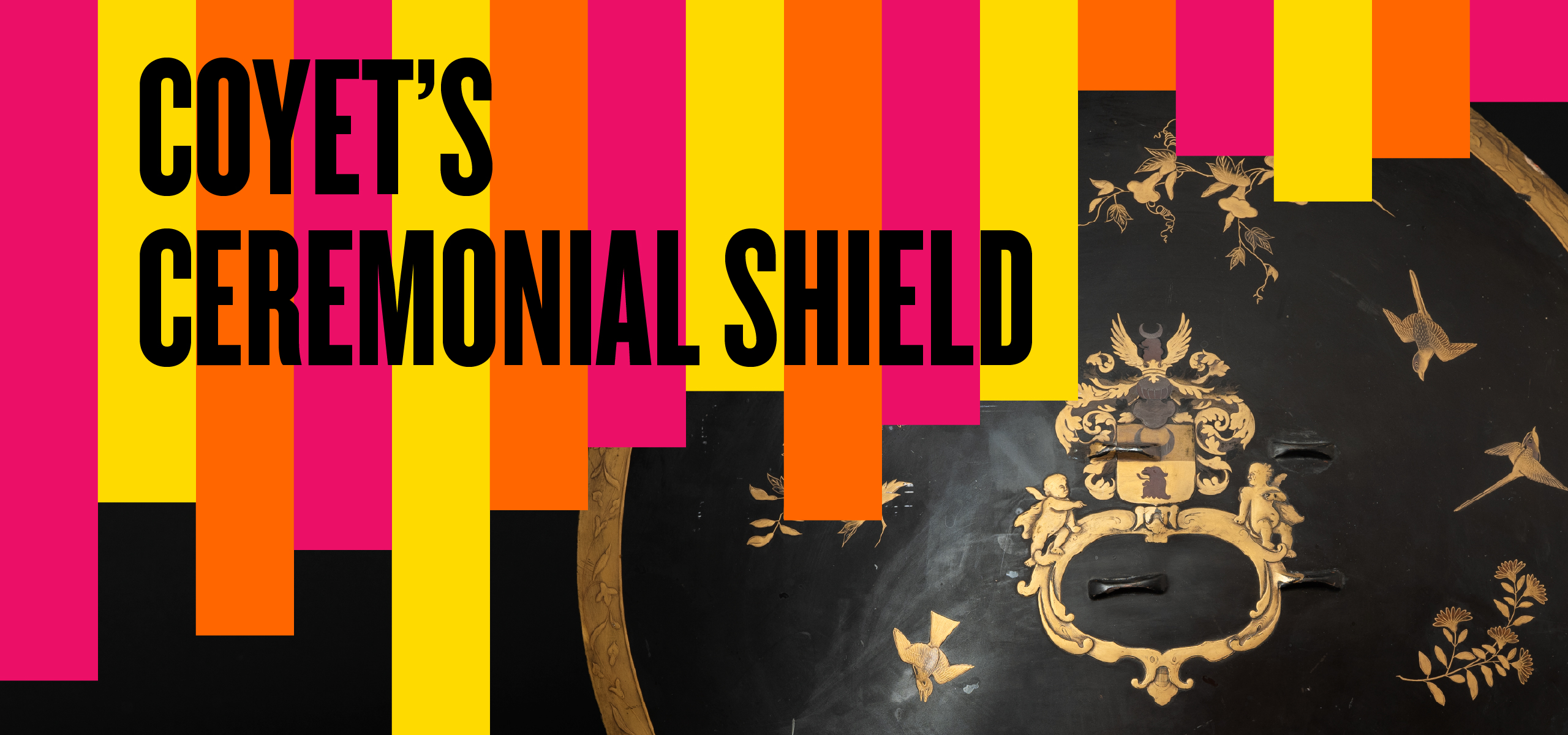

Inventory number: LRK28864
Year made: 1600s
Origin: Japan
As the key object of the Museum of Far Eastern Antiquities, we have chosen a round leather shield, probably manufactured in India but painted and decorated in Japan. The inside is bronzed and varnished. The front is painted black and adorned with flowers, birds, and a gold-lacquered coat of arms featuring a lion and a crescent moon. The shield was never intended for battle, but is purely an art object meant to signal the owner’s status and wealth. Who created it is unknown, but it was almost certainly commissioned by the Swedish diplomat Fredrik Coyet (1615–1687) from Stockholm.
Coyet was one of many Swedes who served in the Dutch East India Company. He was ennobled in Stockholm in 1649, married in India the following year, and had at least three children. In 1652–1653 he served as a diplomatic envoy in Nagasaki, Japan, and was subsequently appointed governor of the then-Dutch colony of Formosa (today’s Taiwan) and Fort Zeelandia in 1656. Only a few years later, however, in 1662, Coyet lost the territory to Koxinga, a Japanese-Chinese general who wanted to use the island as a base to restore the Ming dynasty in China. Coyet was put on trial and exiled to the Banda Islands (in present-day Indonesia). It would be twelve years before he managed to return to Europe and the Netherlands, where he died in 1687.
Fredrik Coyet never saw Stockholm again, but his shield made its way to Sweden by unknown means. In 1852 it was donated by one of his relatives, Admiral Carl Fredric Coyet (1768–1857), to the Royal War College (Kongl. Krigs Collegium). From there, the shield went to the Royal Armoury (Livrustkammaren, 1855), and was later transferred to the Nationalmuseum (1887) before being deposited at the Museum of Far Eastern Antiquities in 1959. Eventually, it was incorporated into the collections of the National Museums of World Culture during a government reorganization in the late 1990s. It has been displayed to the public at the Museum of Far Eastern Antiquities in "Japan – Objects and Images Tell Stories" (2011) and later in the permanent exhibition on Japan.
Coyet’s ceremonial shield can serve as a starting point for stories about the colonial projects in Asia, the cosmopolitan ambitions of the nobility, and the close ties between foreign policy and trade. Furthermore, it is an example of Asian production for Western luxury consumption.
The National Museums of World Culture are here collaborating with Kao Jun-Honn (高俊宏), an artist and writer from Taiwan. Born in 1973, he works in several different media and materials, often focusing on history, colonialism, and racism. Jun-Honn holds degrees from Taipei National University and Tainan National University of the Arts. Today, he is affiliated with the Institute of Interdisciplinary Arts at Kaohsiung Normal University. We look forward to sharing his work "The Sun of Zeelandia" with the public.